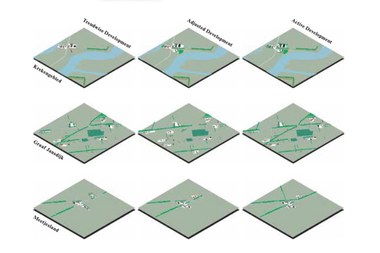New Landscapes in Flanders
According to the landscape specialist Marc Antrop ‘new landscapes’, as opposed to relic landscapes, can be defined as ‘… landscapes that emerged from a “tabula rasa” method, after the Second World War. What is remarkable is the large-scale approach, the “international” nature, the tendency towards standardisation and the obliteration of the traditional diversity of our landscapes. As a reaction to the rather negative connotations of this definition, the New Landscapes in Flanders study attempted to emphasise the qualities and potential of new landscapes instead of concentrating on their weaknesses.
The focus of the study was the so-called ‘blank areas’ in the Landscape Atlas. Due to a lack of cultural-historical value, these areas were not included in the atlas and therefore did not fall under any form of policy. By means of this study Labo S hoped to counter this shortcoming by formulating a methodology to deal with these blank areas.
Project Info
Research group: Labo S
Start date: 2003
Researchers: Pieter Uyttenhove, Philippe Van Wesenbeeck, Bruno Notteboom, K. Boonen and David Peleman
